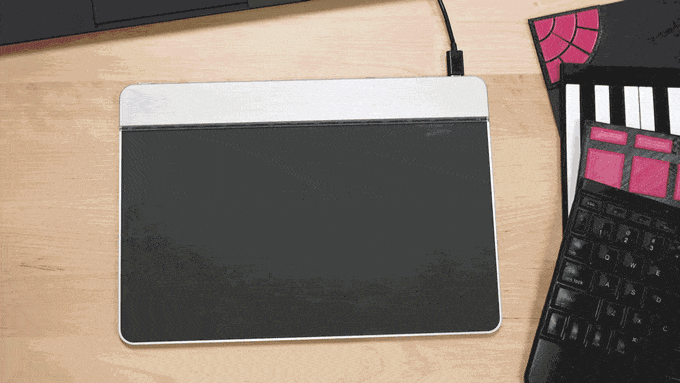For as much as computing has changed, the way we control our desktops and laptops has barely budged. Part of our longstanding reliance on the mouse and keyboard is due to tradition. It’s simply the way we’ve always done it, which makes it difficult for change to take hold. But more important is this: the mouse and keyboard combination is an exceptional one, and everything that has tried to trump it has thus far failed.
The Sensel Morph is probably the best chance yet for the mouse to be dethroned, and given that it has far surpassed its initial $60,000 Kickstarter goal, we’ll be able to find out in a few months. The Morph is essentially a giant trackpad, but unlike Apple’s Magic Trackpad, this one doesn’t require the touch of a human finger. Its 20,000 sensors can detect subtle movements from paintbrushes, styli, and other tools. To boot, users can slap overlays atop it to turn it into a piano, a paint canvas, a DJ deck, and whatever else users care to dream up.
Early testing has shown that it’s responsive and intuitive, and given its size, it’s the ideal input device for film cutters, audio engineers, designers and artists. But with a price of $249 (or $199 if you’re one of the early backers), Morph won’t stand a chance at usurping the mouse. For as impressive as it is, it remains a niche device. It’s best suited to enable added productivity to a certain sect of professionals — professionals willing to pay far more than the masses spend on a mouse.
If we reach a point where the Morph can be produced and sold for $50 or so, and Sensel is able to partner with the world’s top laptop-makers to get its tech embedded into existing trackpads, then perhaps we can revisit the conversation. The idea, and the technology behind it, far exceeds what a typical mouse is capable of. But when you’re able to buy entire PCs for $250, it’s tough to persuade someone to spend just as much for a superior input device.
The mouse, as it turns out, is still good enough.
